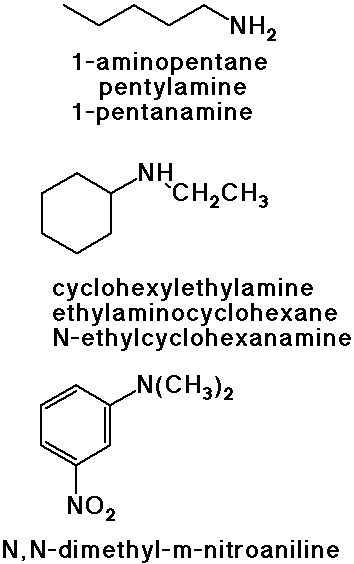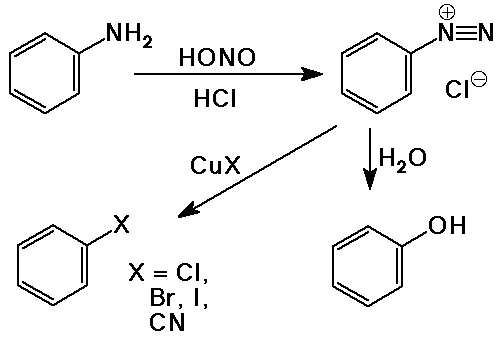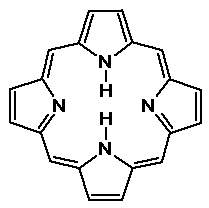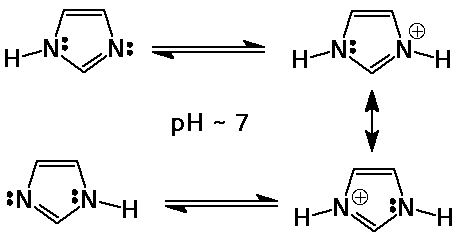
Chapter 21 - Amines

Organic Compounds Containing Nitrogen
- a wide variety of functional groups, including combinations
with oxygen
Classification of Amines
- primary (1°) - one C attached to N
- secondary (2°) - two C attached to N
- tertiary (3°) - three C attached to N
- quaternary (4°) - four C attached to N (and a positive
charge)
- note the difference from other functional groups, which are
classified according to the C to which the functional group is
attached

Nomenclature of Amines
- IUPAC: amino- substituent
- common: alkyl amine
- Chemical Abstracts: alkanamine

Structure of Amines
- sp3 (tetrahedral) nitrogen including the lone
pair

- tertiary amines usually cannot be isolated as separate enantiomers
- amines undergo rapid pyramidal inversion
- quaternary amines could be chiral and isolable as separate
enantiomers
- polar bonds make small amines water-soluble, good H-bonding
Spectroscopy of Amines
- IR: characteristic N-H stretch 3300 - 3500 cm-1
- one N-H band for 2° amines, two bands for 1° amines
- NMR: chemical shift of N-H variable (like O-H), depends on
H-bonding
- rapid N-H exchange with solvent prevents splitting
- Mass Spec: Nitrogen Rule - odd parent peak implies odd number
of nitrogen atoms
Basicity of Amines, Acidity of Ammonium Ions
- N lone pair relatively easily protonated

- note that Kb x Ka = [H+]
[OH-] = Kw = 10-14
or pKa + pKb = 14
- recall that when pH = pKa , there are equal concentrations
of the conjugate acid and conjugate base present (i.e., RNH2
and RNH3+ )
- for typical aliphatic amines, pKb = 3 - 4
so pKa = 10 - 11 for their ammonium ions
so at around pH 10 - 11 , RNH2 and RNH3+
are both present
- for typical aromatic amines, pKb = 9 - 10
so pKa = 4 - 5 for their ammonium ions
so at around pH 4 - 5 , ArNH2 and ArNH3+
are both present
- water solubility of amines can be easily changed with pH
aromatic amines are water-soluble (protonated) below pH 4
aliphatic amines are water-soluble (protonated) below pH 9
Basicity Trends
- aromatic amines are less basic due to resonance delocalization
of the N lone pair

- amides are nonbasic due to strong delocalization of the N
lone pair

- electron withdrawing effects decrease basicity
because the N lone pair is less available for bonding to a proton
Optical Resolution
- a racemic mixture of a chiral amine can be separated into
enantiomers if a sample of a chiral acid is available
e.g., lactic acid or citric acid from natural sources are chiral
- the amine-acid salts (ammonium carboxylates) are diastereomers
and may have distinctive properties that would allow them to
be separated (e.g., solubility)
Preparations of Amines
- substitution reactions:
SN2 reaction of ammonia on alkyl halides
but the amine product is still nucleophilic and further substitution
often results
primary amines can be made by using a great excess of NH3
to avoid further substitution


Reactions of Amines
- substitution reactions:
SN2 reactions on alkyl halides
but oversubstitution is a problem, except for making quaternary
ammonium ions

- acyl substitutions to make amides (usually from acid chlorides)
Diazonium Salts
- secondary amines react with HNO2 (nitrous acid)
to make N-nitrosoamines
- primary amines react with HNO2 to form a diazonium
ion (diazotization reaction)
- aliphatic diazonium ions are unstable, give carbocations
- possible products include rearrangements, eliminations, nucleophilic
substitution
- aryl diazonium ions are relatively stable and can be replaced
by many nucleophiles
- this method provides a good way to attach nucleophiles to
aromatic rings
- Sandmeyer reactions : CuX as catalyst to convert diazonium
ion to ArX

Elimination Reactions
- Hoffmann elimination - from a quaternary ammonium hydroxide
- Cope elimination - from a tertiary amine oxide
Pyrrole
- pyrrole is even more reactive than benzene in electrophilic
aromatic substitution

- the porphine ring system is a tetrapyrrole - found in heme,
chlorophyll, etc.

Pyridine
- pyridine is less reactive than benzene in electrophilic aromatic
substitution

Imidazole
- a 5-membered heterocyclic ring with two N
- one N lone pair is availble for bonding (basic)
pKb for imidazole is close to 7
it is a common acid (and base) catalyst in biological systems
around pH 7

Alkaloids
- naturally occurring amines, such as morphine
the alkaloid name comes from their basic (alkaline) properties
![]()


![]()






